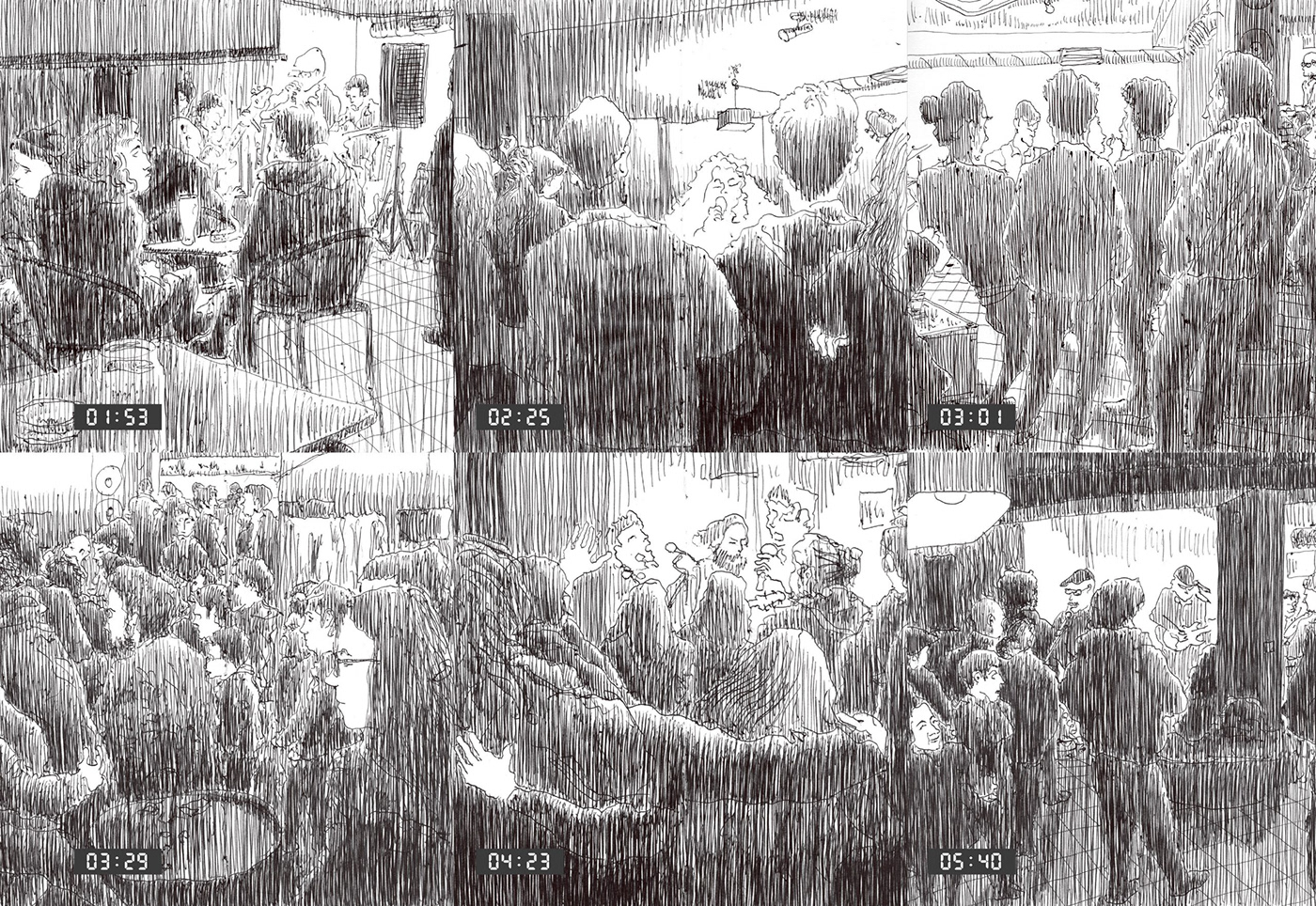Nocturnal Drawing Serie or maybe Mapping
There are no maps of Vienna by the moonlight. (Gombrich, 1975, p. 127), so perhaps there could be maps of nightlife in the city of Porto or, to a lesser extent, a map of the night in a small bar in São João da Madeira. Maybe Nocturnal Drawings Mapping.




















The well-known phrase of the art historian Ernst Gombrich (1909-2001) appears in a context in which the conventional way in which maps offer a normative and codified geographic information, which is not influenced by the perception of a subject in loco, is underlined. In fact, it is not a concern of cartography to represent the tonal values resulting from lighting and climatic conditions (which evolve over the hours of the day and according to the seasons of the year, always subject to interpretation with a strong subjective charge and consequent implication in the experience of places), these are not covered by the cartographic code.
What if the purpose of maps is not a topographical description or Wayfinding, but rather the visualization of subjective experiences of places? Doesn’t it then make sense to produce descriptions of these places at night and in loco and ad vivum, in order to include the perceptive and emotional conditions, dictated or influenced by the absence of light?




















If there are no maps of Vienna in the Moonlight, then maybe there can be maps of the nightlife in the city of Porto or, on a smaller scale, a map of the night in a small bar in São João da Madeira. In this case, perhaps a greater reciprocity between various senses can be achieved, given the effect that the mitigation of vision has on the expansion or activation of the sense of touch during recognition of the place. Therefore, perhaps the conditioning of observation during the drawing at night, provides an observation that uses as many of the five senses as can be reached through the eye, at the same time (Nicolaides, 1990, p. 5). Perhaps, a memorable representation for being more complete, for being multisensory.

This sequential series of 53 nocturnal drawings shows the conscious use of the reciprocity of the senses, as a strategy for the representation of places. The meaning of the images, which becomes memorable for the author, comes from the way in which the drawing emerges, from a conscious relationship between the designer’s body and the place represented. This bodily relationship between the author/drawer and the place is materialized in the series of drawings, constituting a sensitive fabric made to measure for the body of the place.
When a selection of images from this series is composed on a page, it becomes possible to be interpreted by other viewers. A composition with origins in an analogue medium, but adaptable in its response to various formats and supports, whether analogue or digital.
















It shows a script of what develops throughout the night in the same place, seen from different angles and over several hours. The joint presentation of views from the same place seems to highlight more temporal references at the expense of geographic references. Thus, it offers the observer a certain voyeuristic connotation, which moves away from the action, in order to observe better.
It is in this sense that the composition of these drawings is proposed as a design strategy, ‘tailor-made’ maps of the body of places (Carvalho Cardoso, 2019). Maybe Tailor Made Maps, or Nocturnal Drawing Mapping.
Bibliography:
- Carvalho Cardoso, José Miguel. 2019a. “Maps ‘Tailor Made’ to the Body of Places: Design Strategies Against the Indifference of Representation.” Design Journal 22(1):97–108. doi: 10.1080/14606925.2019.1560719.
- Gombrich, Ernst. 1975. “Review Lecture Mirror and Map: Theories of Pictorial Representation.” Philosophical Transactions of the Royal Society of London. , Biological Sciences Series B(270(903)):119–49.
- Nicolaides, Kimon. 1990. The Natural Way To Draw. Boston: Mariner Books.




